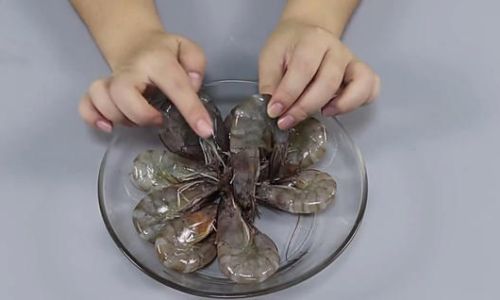Introduction
Sea shrimp, known for their delicate flavor, firm texture, and rich nutritional profile, are a staple in many culinary traditions worldwide. Whether you’re planning to prepare a sumptuous seafood feast, a light summer salad, or a sophisticated sushi platter, selecting the freshest and highest-quality sea shrimp is crucial to ensuring an unforgettable dining experience. However, navigating the seafood market can be daunting, especially with the myriad of options available. This guide aims to provide you with comprehensive insights on how to pick the best fresh sea shrimp, ensuring that every bite is as delightful as it should be.
Understanding Sea Shrimp Varieties
Before diving into the selection process, it’s essential to familiarize yourself with the different types of sea shrimp available. Common varieties include:

-
White Shrimp (Litopenaeus setiferus): Found along the Gulf Coast of the United States, these shrimp have a sweet, mild flavor and are often sold fresh or frozen.
-
Brown Shrimp (Farfantepenaeus aztecus): Smaller than white shrimp, brown shrimp are also Gulf Coast natives, known for their firm texture and slightly brinier taste.
-
Pink Shrimp (Farfantepenaeus duorarum): Predominantly caught in the Atlantic Ocean, pink shrimp are medium-sized and have a delicate, slightly sweet flavor.
-
Tiger Shrimp (Penaeus monodon): Native to tropical and subtropical waters, tiger shrimp are larger and have a bold, slightly sweet taste with a hint of brininess. They are often farm-raised.
-
Spot Prawn (Pandalus platyceros): Found in cold, clean waters of the Pacific Northwest, spot prawns are highly prized for their sweet, buttery flavor and firm texture.
-
Rock Shrimp (Sicyonia brevirostris): Smaller and more delicate, rock shrimp are often used in soups and stocks due to their intense flavor.
Each variety offers unique characteristics that can suit different cooking methods and personal preferences. Understanding these differences will help you make an informed choice when selecting your shrimp.
Visual Inspection: The First Line of Defense
When shopping for fresh sea shrimp, visual inspection is your first and most crucial step. Here’s what to look for:
-
Color: Fresh shrimp should have a vibrant, almost translucent appearance with hues ranging from grayish-white to pinkish-brown, depending on the species. Avoid shrimp that have a dull, grayish, or discolored appearance, as this may indicate they are not fresh.
-
Opacity: Fresh shrimp should be somewhat translucent, allowing you to see through the shell to some degree. If the shrimp looks solid and opaque, it may be older or have been previously frozen.
-
Shell Condition: The shell should be smooth, firm, and intact, with no cracks, spots, or sliminess. Discoloration, especially dark spots, can indicate spoilage.
-
Body Shape: Fresh shrimp maintain a slightly curved shape with firm, plump bodies. Shrimp that are straight or have a flattened appearance may be older or have been improperly handled.
-
Eyes and Antennae: The eyes and antennae of fresh shrimp should be intact and slightly moist. Dry, falling-off eyes and antennae are signs of aging.
Texture and Firmness
Touch is another important sense to employ when selecting fresh shrimp. Here’s how to use it effectively:
-
Firmness: Press gently on the shrimp’s body. It should feel firm and spring back to its original shape. Soft, mushy shrimp are a sign of freshness loss.

-
Moisture: The shrimp should feel slightly moist but not wet or slimy. Excessive moisture can indicate that the shrimp have been sitting out for too long or have been improperly stored.
-
Smell: Although not a tactile check, smell is closely related to texture in the context of freshness. Fresh shrimp should have a mild, slightly sweet, and slightly briny aroma. Avoid shrimp that have a strong, fishy odor, as this is a sign of decomposition.
Labels and Certifications
In addition to visual and tactile inspections, reading labels and seeking certifications can provide valuable information about the shrimp’s quality and sourcing:
-
Country of Origin: Knowing where your shrimp come from can give you insight into their farming or catching practices. Some countries have stricter regulations regarding seafood handling and sustainability.
-
Farm-Raised vs. Wild-Caught: Both have their pros and cons. Farm-raised shrimp may be more consistent in size and shape but may also have higher levels of antibiotics and feed additives. Wild-caught shrimp are often considered more sustainable but can vary in quality depending on the fishing practices employed.
-
Sustainability Certifications: Look for certifications like Marine Stewardship Council (MSC), Aquaculture Stewardship Council (ASC), or Best Aquaculture Practices (BAP) to ensure that your shrimp are sourced responsibly.
-
Date Labels: If purchasing frozen shrimp, check for a “packed on” or “best before” date to ensure you’re getting a product that hasn’t been in cold storage for too long.
Storage and Handling Tips
Once you’ve selected your fresh sea shrimp, proper storage and handling are essential to maintain their quality until you’re ready to cook:
-
Immediate Refrigeration: Store fresh shrimp in the coldest part of your refrigerator, ideally on a bed of ice, to keep them at a constant temperature.
-
Proper Packaging: If not using immediately, repackage shrimp in airtight containers or wrap them tightly in plastic wrap to prevent moisture loss and cross-contamination.
-
Avoid Washing Before Storage: Washing shrimp before storing can promote bacterial growth. Instead, rinse them under cold running water just before cooking.
Conclusion
Selecting high-quality fresh sea shrimp is an art that combines knowledge, observation, and a bit of intuition. By understanding the different varieties, carefully inspecting each shrimp for visual cues, feeling for firmness and moisture, and reading labels for additional information, you can ensure that your shrimp are fresh, delicious, and responsibly sourced. Remember, the key to a successful seafood dish lies in the quality of the ingredients, and with these tips, you’ll be well-equipped to make the best choices at the market. Happy shrimp shopping!





0 comments